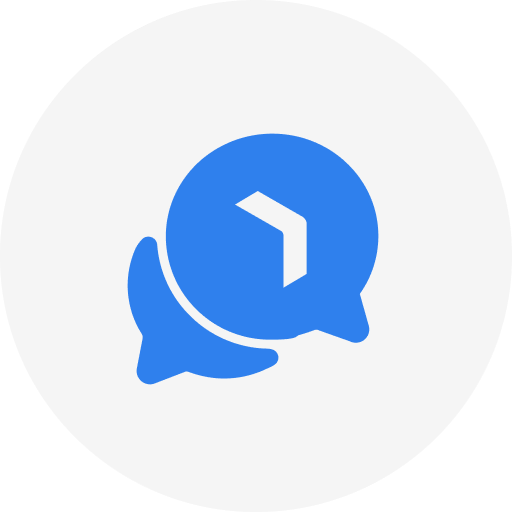A call center’s leadership team probably worries more about the service level and customer experience than any other aspect of their operation. That makes sense, given that satisfying customers is call center's overriding mission. Everything from agent hiring policies and training programs to call center software systems and operational processes is geared to support it.
All roads lead to call center shrinkage
Virtually every KPI used to quantify the customer experience a call center is delivering – Net Promoter Score (NPS), Average Handling Time (AHT), Customer Effort Score (CES), Average Speed of Answering (ASA), First Call Resolution (FCR), to name a few – is connected to a foundational, yet less discussed metric. All roads, it turns out, lead to Call Center Shrinkage.
Call Center Shrinkage isn’t a Quality Management metric. It doesn’t score your agents/customer interactions. It doesn’t provide insights you can leverage for ‘coaching up’ your agents. It doesn’t measure customer attitudes. Instead, it’s a bedrock Workforce Management metric; it renders a verdict in unambiguous, black-and-white terms on your forecasting and scheduling capabilities and the extent to which your agents follow their schedule.
It's the ratio of the number of agents actively serving customers vs. the number of scheduled agents who are - for whatever reason - unavailable at the time. In other words, when your agents are on the clock, how much time are they spending on their primary responsibility - handling customer interactions? Calculating shrinkage is crucial for call center operations.
Why does call center shrinkage matter?
Forecasting and scheduling are inexact sciences under the best of circumstances. That’s primarily because a call center’s operation is at the mercy of human behavior - on the demand AND supply sides. Call centers aren’t assembly lines operating on the assumption of predictability and clockwork repetition.
Managers and Schedulers have to ask:
- The Demand Question: How accurately can I forecast customers’ demand for my agent resources across multiple channels
- The Supply Question: How confident am I that I've scheduled enough supply - agents – with the right skill sets to the right channel to meet that demand?
- The Call Center Shrinkage Question: How well have I planned for the unexpected and unavoidable scheduling conflicts?
The Customer Experience hinges on the answers. Accurate forecasts feed accurate schedules. Accurate schedules contribute to customer satisfaction. But the best-laid plans can be derailed by the unexpected or unavoidable.
Examples of the Unexpected
- Sickness
- Absenteeism
- Tardiness
- Unplanned System Downtime
- Bathroom Breaks
Examples of the Unavoidable
- Team meetings
- Vacations
- Training
- Time spent helping other departments
Planned or unplanned, anything that takes an agent away from their customer-facing work can leave a resource gap that subtracts from the customer experience. How well your call center performs in virtually every customer experience KPI directly correlates with agent resource levels, so it’s vitally important to take shrinkage into account as you forecast and schedule.
There’s debate on the best way to calculate shrinkage, but the consensus seems to fall on the following:

Internal Shrinkage Includes:
- Paid breaks
- Toilet breaks
- Meetings
- Training and coaching
- System problems
External Shrinkage Includes:
- Public holidays
- Annual leave
- Sickness
- Lateness and leaving early
- Absenteeism
Remarkably, the average shrinkage rate in call centers is in the 30%-35% range. That means that if you’ve scheduled 10 agents to handle forecasted customer call volume, only 7 are available to answer those calls at any given time! Think about how that might impact hold times and customer satisfaction.
That said, beware of low shrinkage. While low shrinkage may seem efficient and productive, it could be a misleading indicator if it comes at the expense of essential training and coaching.
Shrinkage varies throughout the day and the year, so you must monitor it consistently. For instance, over the course of a year, shrinkage tends to peak during the summer months, particularly during school summer vacations and around the Christmas season. Throughout the day, you may notice that shrinkage is most prominent between 9:00 AM and 11:00 AM and between 2:00 PM and 3:00 PM – the typical time periods for team or company meetings.
During slower periods, your agents may take longer breaks or engage in more conversations with their co-workers. Even if these extended periods of unavailability coincide with times when your company isn't receiving a high volume of customer calls, it's still crucial to measure shrinkage. Increased shrinkage during slower periods can impact your agents’ potential availability to handle customer calls.
Why track shrinkage?
Understanding and monitoring shrinkage is essential for creating accurate and efficient agent schedules. If you don’t know your shrinkage rate it's challenging to schedule the right number of agents to meet the demands of your call center.
Going back to the previous example, if you assume you need only 10 agents to handle call volume during a specific time period, you might fall short; shrinkage means you'll actually require more agents than this assumption suggests. If your shrinkage rate is 30%, you would need to schedule around 14 to 15 agents to ensure you consistently have 10 agents available.
Tracking shrinkage can also shed light on wasted or underutilized time. For instance, if you discover shrinkage is high you’ll probably want to investigate the reasons behind this inefficiency. You might find agents are spending too much time on unnecessary activities, like excessive meetings or extended breaks.
Addressing and rectifying these problems can lead to substantial cost savings and operational improvements. For example, imagine a contact center with 100 full-time agents that manages to reduce its shrinkage from 40% to 35%. Assuming a 40-hour work week, this improvement results in an extra 200 hours of productive work each week, which can significantly enhance the customer experience.
Schedule Adherence - WFM tools and practices for improving call center shrinkage
Call Center managers and schedulers take great care to put each agent on the clock based on their unique skill set and forecasted customer demand. The schedule they develop is like a map, made to be followed. Any unplanned-for variation – even a 15-minute coverage lapse for one agent – can send the entire contact center off-course.
An effective Schedule Adherence tool lets leadership know if their agents are sticking to the plan. It provides a detailed view of agents' schedule adherence during a user-defined period, with durations ranging from minutes to multiple days, and it also allows supervisors to quickly see agents’ scheduled activities, view their status and identify out-of-adherence events during that time.
Ensuring accountability among your agents for adhering to specified schedules is essential to reducing shrinkage, but it's crucial to recognize that exceptions will inevitably arise. Establishing adherence goals, though, is a must.
Making these goals practical requires that you consider:
- Acceptable Violations: What types of infractions are tolerable and how frequently these deviations can occur before they are deemed unacceptable? This question reflects your corporate culture and its attitude toward adherence. For instance, in the context of restroom breaks, some contact centers may permit one or two unscheduled breaks during the day, while others may enforce stricter adherence to scheduled breaks.
- Flexibility: Assess whether your adherence goals allow for flexibility. For example, will agents who commence customer interactions just before a scheduled break feel compelled to prematurely conclude these interactions to meet adherence targets?
- Conflicting Processes and Procedures: Examine whether certain workplace processes and procedures are at odds with your adherence and shrinkage objectives. Are supervisors and team leaders currently instructing agents to take breaks at unscheduled times or pulling them off the phone for impromptu meetings and coaching sessions?
- Ancillary Duties: Consider whether agents are expected to perform essential but tangential duties. These tasks might include updating databases or responding to emails related to open cases. Could you quantify a daily allotment of time for agents to log off the phone and handle these necessary tasks within their schedules? Alternatively, can these responsibilities be assigned to a dedicated agent or team responsible for their execution?
A real-time adherence tool will empower managers to monitor agents' ongoing tasks and will proactively send push notifications to alert managers when an agent deviates from their scheduled task. This allows managers to take swift corrective actions in response to out-of-adherence events, thus reducing shrinkage.
The laws of physics dictate that nothing operates at 100% efficiency – not even the most sophisticated, tightly calibrated machine. As we’ve discussed, the laws of human nature and organizational behavior tell us that call centers do well to operate at 70% efficiency.
On the bright side, humans and organizations can adapt. While Call Center Shrinkage is unavoidable, there are ways to plan for it, and Workforce Management tools help minimize its impact on the customer experience.



